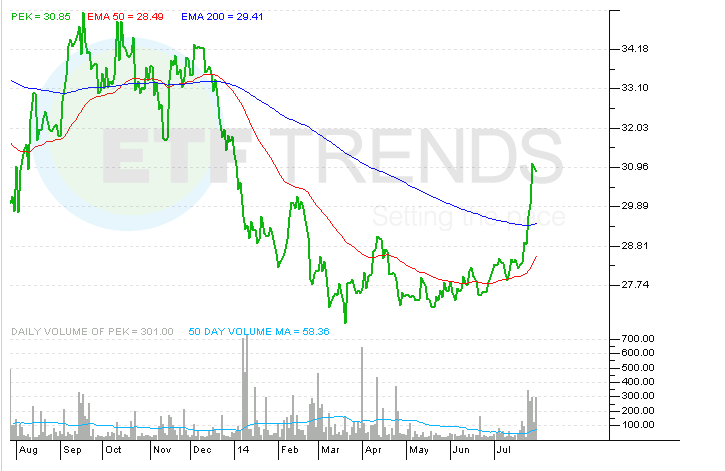What Will Drive China ETFs Amid Economic Transition PEK FXI GXC
Post on: 22 Апрель, 2015 No Comment

W hen a behemoth such as China is showing signs of a slowdown in its economy. investors better keep a close eye on it.
But while the headlines may sound scary, underlying trends are key to understanding the rebalancing this country is going through.
China is moving from an investment-based economy to a consumer-driven one. But the process is taking its time, as slowing nominal wage increases, a slowing real estate market, a high savings rate and a social support network that is not yet well established are dampening growth in private consumption.
We’re talking about the investment side of the economy shrinking as a percentage of GDP and the consumption side of the economy growing to something more approximating something normal, said Dan Rohr, director of basic materials equity research at Morningstar. At one-third of the economy, roughly, that consumption side is really unprecedentedly small.
As a result, consumption is expected to grow but at a tapering pace.
Growth is slowing, but it is a good thing, said Amrita Nandakumar, ETF product manager at Van Eck Global, which sponsors Market Vectors ETFs, including $82 million Market Vectors ChinaAMC A-Share ETF (ARCA:PEK ). It’s something that we would want to see in order for China to transition to sustainable growth that’s driven by consumption.
While having had a lackluster performance in the past several years, the Chinese market shot up 51.6% in the second half of 2014 as measured by the CSI 300 index, which tracks the performance of mainland China’s 300 largest, most liquid stocks.
Stock Connect Program
The rise was due to improved investor confidence in the market and increased belief that the economy would have a soft rather than hard landing, Nandakumar said.
Another contributor to performance was the news that the Chinese financial regulator would be launching a new program, called the Shanghai-Hong Kong Stock Connect Program, which officially began on Nov. 17. This program represents a huge step forward by the Chinese government to open up its capital markets, she said.
Stock Connect combines the stock markets of Hong Kong, Shanghai and Shenzhen into one of the world’s largest, with a $7.5 trillion combined market cap, according to Goldman Sachs.
That said, the rebalancing taking place in China’s economy will result in more market volatility and calls for caution as well as thoughtful selection of sectors for investors.
Health care and household consumption are areas expected to do well. Steel, real estate, mining, financing for manufacturing and infrastructure are likely to face considerable headwinds, Rohr said.














